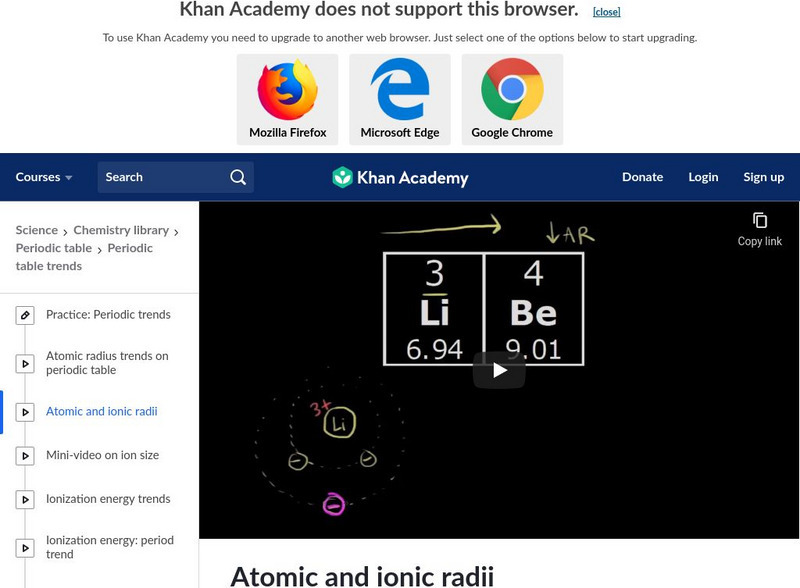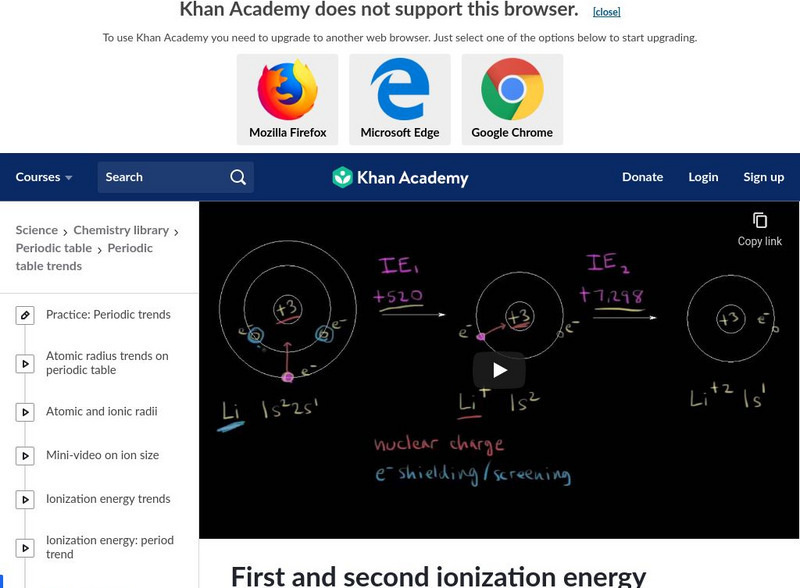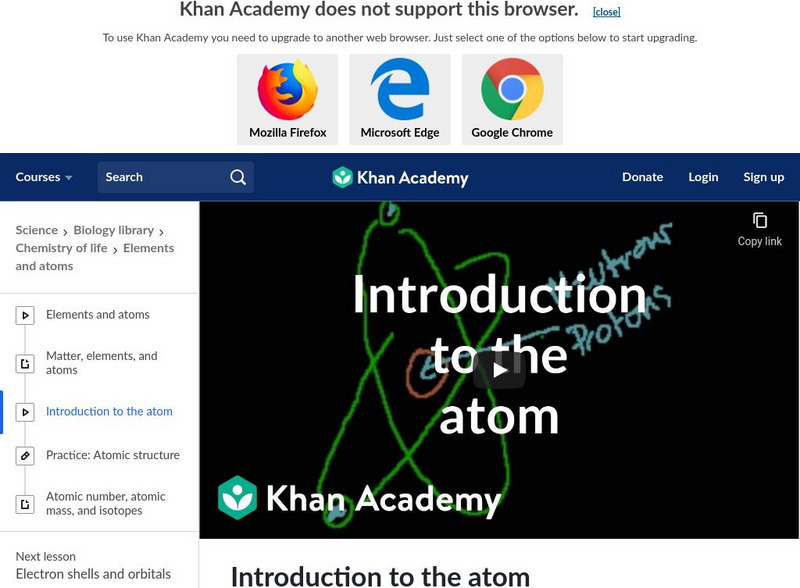Hi, what do you want to do?
FuseSchool
How The Elements Are Laid Out In The Periodic Table
Learn the basics about How the elements are laid out in the periodic table? Why are they all named and placed that way? Find out more in this video!
Mazz Media
Octet Rule
This video uses animation and introduces Lewis Structures to demonstrate stable and unstable electron configurations to explain the octet rule. The program shows viewers how they can use the periodic table to understand the octet rule....
Wonderscape
Science Kids: Introduction to the Periodic Table
This video is a lesson on the periodic table of elements. The teacher explains what the periodic table is, how it is organized, and its importance in understanding chemistry. The video covers topics such as the definition of an element,...
FuseSchool
Isotopes Example
We've now learned about Isotopes. Now here are some examples of simple calculations involving isotopes that you'll need to know for the science GCSE. Find out in this video from the Properties of Matter chapter of the Virtual School GCSE...
FuseSchool
What are Isotopes?
What are Isotopes? Find out in this video from the Properties of Matter chapter.
Professor Dave Explains
Nuclide Symbols: Atomic Number, Mass Number, Ions, and Isotopes
How do we represent an atom, with all of its protons, neutrons, and electrons? With nuclide symbols, of course! These show the type of element, as well as the atomic number, mass number, and electrical charge of an atom. That's all you...
Visual Learning Systems
The Periodic Table: the Modern Periodic Table
This program makes the Modern Periodic Table come alive to students. Numerous real-life examples of elements are exemplified in the table. Animations and graphics illustrate concepts not easily achieved through other instructional...
FuseSchool
What Are Periods & Groups In The Periodic Table?
What's the difference between periods and groups in the Periodic Table and why are the elements structured this way. Find out in this video from the Properties of Matter chapter of the Virtual School GCSE / K12 Chemistry.
FuseSchool
PHYSICS - Matter - Atom Structure
I this video you will see how we can use the periodic table to tell us more about the differences between elements, including the different numbers of protons, neutrons and electrons they possess.
Visual Learning Systems
Forming Bonds: Atoms and Bonding
Upon viewing the Forming Bonds video series, students will be able to do the following: Understand that matter is made up of tiny particles called atoms. Explain that atoms consist of many different types of subatomic particles including...
Visual Learning Systems
The Structure and Composition of Atoms
In this video, the concept of the nucleus in an atom is explained, highlighting its significance as the dense core containing over 99% of the atom's mass. Additionally, the importance of the atomic number in distinguishing different...
Getty Images
Chemical element nucleosynthesis. Animation of a supernova explosion ejecting the names, symbols and atomic numbers of the elements.
The elements appear in the order in which they are found in the periodic table. Heavy elements are produced in small amounts in giant stars during their lives, or in supernovae, the explosive death of a giant star. Stars cannot produce...
TED Talks
Ted: Ted Ed: Periodic Videos
Students click on the chemical element symbol, and watch a video lesson about each element on the periodic table.
Khan Academy
Khan Academy: Atomic and Ionic Radii
An explanation of the sizes of different atoms due to the number of electrons that are orbiting in energy shells. [11:25]
Khan Academy
Khan Academy: First and Second Ionization Energy
An explanation of the reasoning why there is such a large difference between first and second ionization energies. [7:34]
Khan Academy
Khan Academy: Biology: Chemistry of Life: Introduction to the Atom
A video investigating the makeup of an atom. Learn that atoms are composed of protons, neutrons, and electrons. Understand that protons and neutrons determine the mass of an atom. Also, the atomic number gives you the number of protons...
Khan Academy
Khan Academy: Chemistry: Periodic Table Trends: Ionization Energy
The energy to remove an electron, or ionization energy, is explained. [12:13]
Khan Academy
Khan Academy: Chemistry: Elements and Atoms
Learn about the relationship between elements and atoms in this video lecture. Understand the basics of how protons, electrons, and neutrons make up an atom and how elements relate to atoms. [13:09]
Khan Academy
Khan Academy: Atomic Number, Mass Number, and Isotopes
Check your understanding of how to use the atomic number and the mass number to represent different isotopes. [9:43]
Sophia Learning
Sophia: Atomic Number: Lesson 1
This lesson will define atomic number and explain what happens if the number of protons in an atom changes. It is 1 of 7 in the series titled "Atomic Number."
Other
E Learnin: Science: Atomic Number and Mass Number of an Atom
Recognize the atomic number and mass number of an atom and how they are linked to the electrons, protons and neutrons of an atom. [2:05]
Khan Academy
Khan Academy: Atomic Number, Mass Number, and Isotopes
How to use the atomic number and the mass number to represent different isotopes. [9:44]
Khan Academy
Khan Academy: Introduction to the Atom
In this video, learn how atoms are made up of protons, neutrons, and electrons. Elements are defined by the atomic number, the number of protons in the nucleus. The mass of an atom is determined by the total number of protons and...

















